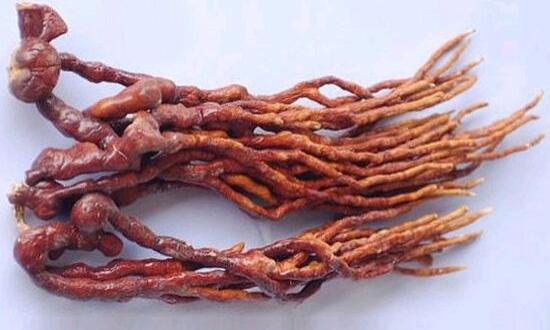Distribution:
South western part of Guangxi province and southern part of Guangdong province.
Properties (characteristics):
Slightly acrid, astringent, warm
Channels meridians entered:
Bladder, kidney
Actions & Indications:
For treatment of Rheumatic Arthritis, numbness with pain, abdomen pain due to qizi (qi stagnation), pain during menses in women.

Chemical ingredients:
α and β-pinene
camphene
1,8-cineole
linalool (12.93%)
safrole (23.61%)
camphor
germacrene D (5.35%)
bornylacetate
myrcene
Daly Dosage:
Take orally, in decoction 9 - 15 g.
External application: boil with water and use it to wash affected areas.
Cautions:
There are two types of di feng pi: one is called Nanning di feng pi that comes from the plant Illicium difengpi BN Chang et al. Historically it has been used as di feng pi. Another is called, Guilin di feng pi, that comes from the plant Illicium jiadifengpi BN Chang var jiadifengpi and a plant called da ba jiao (literally, large octagon), Illicium majus Hook. f. et Thomas, which are false substitutes. Using themmay cause serious poisoning. They should not be used as a substitutes for di feng pi. Users should distinguish between the real and false items. Nanning di feng pi has the traits of: small tubular or finger shape, with good aroma, crisp, easily broken, and fractured surface shows particles. After soaking the herb in water, no mucus oozing out. The adulterated herb generally shows plate-like and groove-like, half cylinder like, after drying shows some camphor aroma and the texture is hard and difficult to break, and the cross section is flat. Thick mucus oozes out after the herb is soaked in water.

![Diseases, Symptoms, tcm, [tcmwindow.com]](/uploadFile/adImg/2015/11/11/f5cbfcc0-4df5-4646-9b9a-f316651a0199.jpg)





